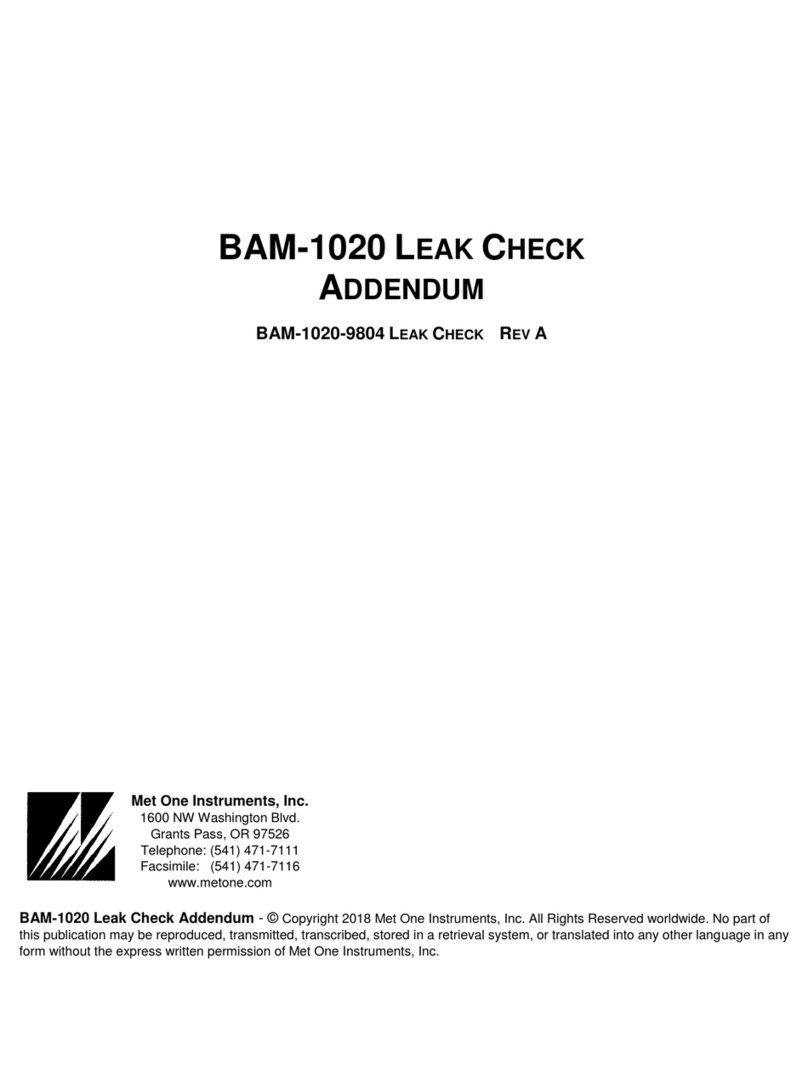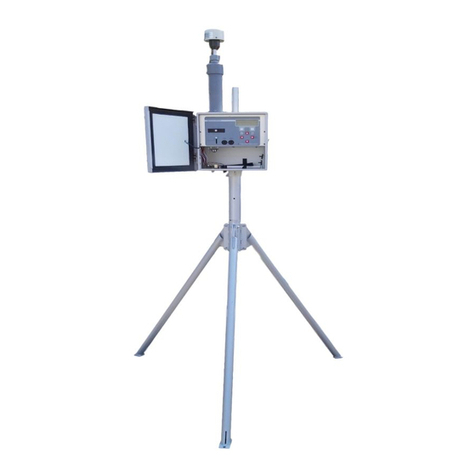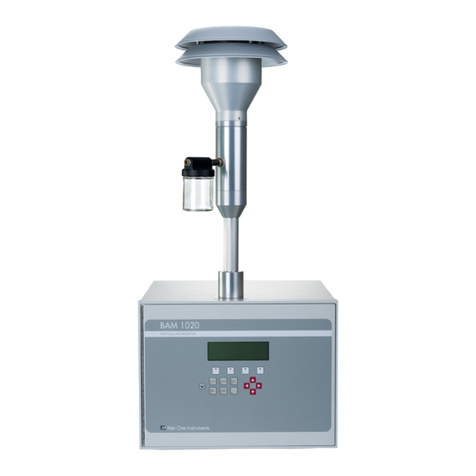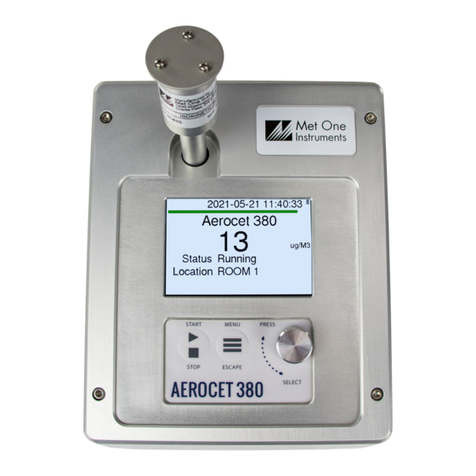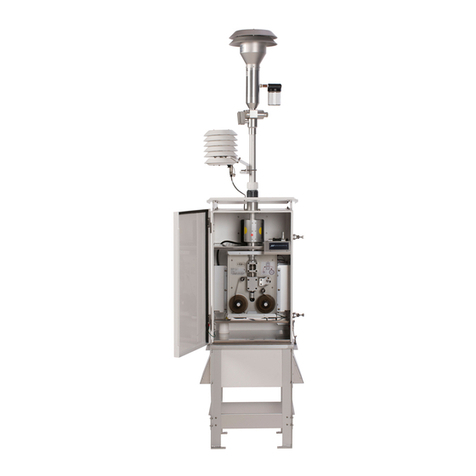
Table of Contents
1INTRODUCTION 4
1.1 About This Manual..................................................................................................... 4
1.2 Technical Service....................................................................................................... 4
1.3 BAM: Beta Attenuation Monitor.................................................................................. 4
1.4 Beta Radiation Safety Statement............................................................................... 5
1.5 Model BAM-1020 PM10 USEPA Equivalent Method................................................... 5
1.6 Model BAM-1020 PM2.5 USEPA Equivalent Method.................................................. 6
1.7 BAM-1020 Specifications........................................................................................... 7
2SITE SELECTION AND INSTALLATION 8
2.1 Unpacking and Inspection.......................................................................................... 8
2.2 Enclosure Selection ................................................................................................... 8
2.3 Site Selection............................................................................................................. 9
2.4 Mounting Options in a Walk-In Shelter..................................................................... 10
2.5 Installation Instructions in a Walk-In Shelter ............................................................ 11
2.6 Electrical Connections.............................................................................................. 16
3INITIAL SETUP OF YOUR BAM-1020 19
3.1 Power On................................................................................................................. 19
3.2 Warm-up .................................................................................................................. 19
3.3 Using the Keypad and Display................................................................................. 20
3.4 Filter Tape Loading.................................................................................................. 21
3.5 Self-Test................................................................................................................... 22
3.6 Initial SETUP Settings Considerations..................................................................... 23
3.7 Initial Leak Check and Flow Check.......................................................................... 24
3.8 Starting a Measurement Cycle................................................................................. 24
3.9 The Flow Statistics Screen....................................................................................... 24
3.10 The OPERATE Screen ............................................................................................ 25
3.11 The NORMAL Screen.............................................................................................. 25
3.12 The INSTANTANEOUS Screen............................................................................... 26
3.13 The AVERAGE Screen............................................................................................ 26
4THE MEASUREMENT CYCLE 27
4.1 The One-Hour Cycle Timeline.................................................................................. 27
4.2 Automatic Span Check During The Cycle................................................................ 28
4.3 Sample Period Description....................................................................................... 29
5FLOW SYSTEM and FLOW CALIBRATIONS 30
5.1 Flow System Diagram.............................................................................................. 30
5.2 Flow Type Descriptions............................................................................................ 31
5.3 Leak Check Procedure............................................................................................. 32
5.4 Leak Isolation and Nozzle Seal Methods................................................................. 33
5.5 Nozzle and Vane Cleaning....................................................................................... 33
5.6 Field Calibration of Flow System – Actual (Volumetric) Flow Mode......................... 35
5.7 Field Calibration of Flow System – EPA Standard Flow Mode................................. 36
5.8 Field Calibration of Flow System – Metered Flow Mode ......................................... 37
6SETUP MENU DESCRIPTIONS 39
6.1 CLOCK Screen ........................................................................................................ 40
6.2 SAMPLE Settings Screen – Critical Information...................................................... 40
6.3 CALIBRATE Screen – Critical Information............................................................... 42
6.4 EXTRA1 Screen....................................................................................................... 44
Page 2 BAM-1020-9800 REV G
